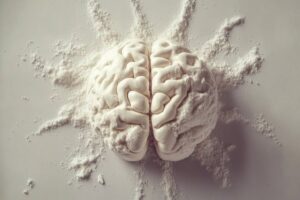
Bigorexia, or muscle dysmorphia, is a body image disorder that predominantly impacts teenage boys and young men, yet remains largely under-recognized. While the conversation around body image disorders often centers on young women, experts are raising awareness about the significant number of young men affected by these issues.
Dr. Jason Nagata, an associate professor of pediatrics at the University of California, San Francisco, emphasizes that “eating disorders in boys are under-recognized, under-diagnosed, and under-treated.” He notes that the majority of research and diagnostic criteria have traditionally focused on women, leaving a gap in understanding and treating disorders like bigorexia in males.
What is Bigorexia?
Bigorexia, also known as muscle dysmorphia or reverse anorexia, is characterized by an obsession with becoming muscular. Individuals with this disorder may perceive themselves as insufficiently muscular, even when they are objectively well-built. According to Joseph Trunzo, a clinical psychologist and associate director at Bryant University, “roughly 90% of those with bigorexia are young men, typically between the ages of 15 to 32.”
While a muscular physique is often admired, the compulsive behaviors associated with bigorexia can be detrimental both physically and mentally. Below, we explore the subtle behaviors that may indicate bigorexia and what actions can be taken if a loved one shows signs of this condition.
Signs of Bigorexia
1. Compulsive Exercise
Exercise is beneficial when done in moderation, but for those with bigorexia, it becomes an obsession. Trunzo warns that excessive time spent at the gym, focusing solely on muscle gain, is a red flag. Nagata adds, “Physical activity becomes a preoccupation, and individuals feel guilty if they’re not constantly working out.”
2. Social Withdrawal
Muscle dysmorphia often leads to disruptions in daily functioning and quality of life. Nagata notes that young men may become so fixated on their fitness routines that they withdraw from social activities, impacting their relationships and responsibilities.
3. Strict Dieting and Food Preoccupation
Individuals with bigorexia may exhibit a preoccupation with dieting, often counting calories or macros obsessively. Trunzo explains that deviations from their strict food plans can lead to distress, and even “cheat days” can mimic binge eating behaviors.
4. Inadequate Nutrition
Despite high levels of exercise, those with bigorexia often do not consume enough food to fuel their workouts. Nagata highlights the risk of entering a state of malnutrition, which can have severe consequences on the body.
5. Excessive Supplement Use
Young men with bigorexia may resort to taking numerous supplements and protein powders, often unregulated by the FDA. Nagata advises caution, as these products can be mislabeled or unsafe.
6. Anabolic Steroid Use
The use of anabolic steroids is common among those with bigorexia, despite their illegal status and significant health risks, including heart and liver damage. Nagata describes steroid use as a major red flag.
7. Obsessive Mirror Checking
Constantly checking their appearance in mirrors is another behavior associated with bigorexia. Trunzo notes that this goes beyond occasional self-checks and becomes a compulsive habit.
The Role of Social Media
Social media plays a significant role in exacerbating body image issues among young men. Trunzo points out that the constant exposure to curated images of celebrities and influencers can distort perceptions of realistic body standards. He advises parents to engage in conversations with their children about the realities behind these images, including the use of editing and personal trainers.
Seeking Help and Support
Recognizing bigorexia as a serious mental health condition is crucial. Nagata stresses the importance of seeking professional help if there are concerns. He recommends starting with a primary care provider or pediatrician who can offer assessments and referrals.
Effective treatment often involves an interdisciplinary team, including mental health, medical, and nutrition professionals. Early intervention can prevent the physical and mental health implications associated with bigorexia.
As awareness grows, it’s essential to continue the conversation about body image disorders in young men, ensuring they receive the recognition and treatment they need.





